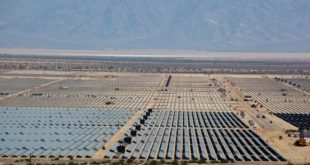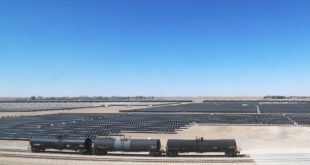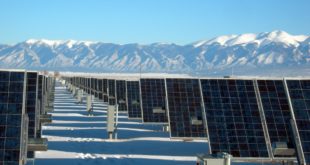Solar power growth has depended on a variety of incentives to get the ball rolling in the consumer and utility scale markets. Subsidies, rebates, leasing, and so on have been needed to get funding for projects and R&D in this growing energy field. This item shows how a consortium set up to promote solar power is further stimulating the market with grants to encourage cost reductions in large scale solar. This is the type of program that should get exposure.
The Bay Area Photovoltaic Consortium (BAPVC) – an industry-supported program led by Stanford University and the University of California-Berkeley – has announced its first research grants aimed at making utility-scale solar power cost-competitive by the end of the decade.
A total of $7.5 million will be given to 18 research teams at BAPVC partner institutions Stanford, UC-Berkeley, Lawrence Berkeley National Laboratory (LBNL), SLAC National Accelerator Laboratory and the National Renewable Energy Laboratory.
balloon boy, Wikimedia Commons14-megawatt solar plant at Nellis Air Force Base, Nev.The Bay Area Photovoltaic Consortium aims to significantly reduce the installed cost of utility-scale photovoltaic systems, like the 14-megawatt solar plant at Nellis Air Force Base, Nev.
The three-year grants will be used to develop new technologies that significantly reduce the cost of photovoltaic modules and make large-scale solar technology cheaper for electric utilities by 2020.
“Our goal is to develop low-cost solar cells that can go into production within the decade,” said John Benner, BAPVC executive director. “We’re looking to develop improvements to existing technologies that industry can implement very quickly. That’s the beauty of these awards.”
Established in April 2011 with a five-year, $25 million award from the U.S. Department of Energy (DOE), the consortium brings together industry and academic experts to identify critical challenges in photovoltaic manufacturing.
More than two-dozen corporations participate in the consortium. Eleven companies – including GE, DuPont, HelioVolt and Corning – have enrolled as industry members, contributing a combined total of more than $500,000 in annual fees to support university-led research. “The consortium is open to engaging with other corporations and research institutions as well,” Benner said.
Member companies play a key role in establishing the overall research agenda, from improving solar cell reliability to developing novel transparent electrodes and low-cost solar absorbers. Members also help review and recommend research proposals with the strongest technical merits and commercial potential.
“We’re not only funding university research,” said BAPVC co-director Yi Cui, an associate professor of materials science and engineering at Stanford, and of photon science at SLAC. “We have created an environment where universities and industry from across the country can communicate. It’s really a national consortium.”
source – read more
A complete list of the 18 research awards is available here. A second request for proposals has gone to U.S. universities outside the consortium. Those grants are expected to be awarded in August.
 Alternative Energy HQ solar power for homes, wind energy, and bio fuel issues
Alternative Energy HQ solar power for homes, wind energy, and bio fuel issues





